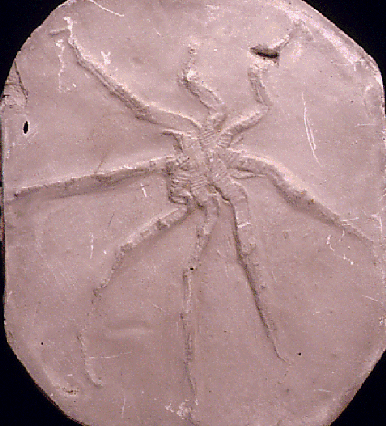Introduction to the Pycnogonida


Pycnogonids, or "sea spiders", are among the most bizarre-looking arthropods. Another name sometimes used for them, Pantopoda, means "all legs" and describes them perfectly. Pycnogonids have extremely reduced bodies in which the abdomen has almost disappeared, while the legs are long and clawed. The head has a long proboscis with an unusual terminal mouth and several simple eyes on a central tubercle. The head also bears a pair of claws and a pair of ovigers on which the eggs are carried. All in all, it can be hard to tell just which end of a pycnogonid is the head; in this picture the head is to the right (we think) and the proboscis has been bent under the body.
Pycnogonids feed on soft-bodied invertebrates, in particular cnidarians, sucking at them with their probosces, and larval pycnogonids often live as parasites within cnidarian tissues. The intestine of pycnogonids has extremely long diverticulae (blind pouches) that extend to the ends of the legs.
Pycnogonids have almost no fossil record. Three genera have been found in the Devonian, in the Hunsruck Slate of western Germany. A cast of one of them, Paleopantopus, is shown here. Pycnogonids were once thought to be close relatives of the chelicerates (horseshoe crabs, true spiders, scorpions, etc.). Both pycnogonids and chelicerates have claws on the first appendages and a tubercle with simple eyes, and both lack antennae. However, pycnogonids show so many unusual features, such as the proboscis, reduced abdomen, ovigers, gut diverticulae, and so on, that they may comprise a separate group that probably branched off very early from the arthropod stem.

Hedgpeth, J. W. 1960. Pycnogonida. pp. 163-P170 in Moore, R.C. (ed.) Treatise on Invertebrate Paleontology. Part P: Arthropoda 2: Chelicerata. Geological Society of America and University of Kansas Press, Lawrence, Kansas.

